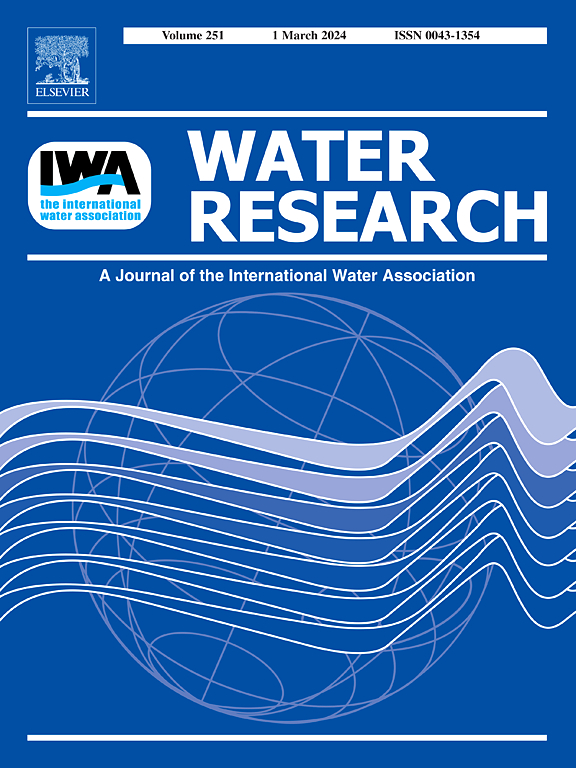Public goods-mediated bacterial interplay in aquatic ecosystems
IF 12.4
1区 环境科学与生态学
Q1 ENGINEERING, ENVIRONMENTAL
引用次数: 0
Abstract
Microbial public goods, including siderophores, heme, and catalases, underpin cooperative interactions in aquatic environments. These extracellular compounds enable resource acquisition, stress mitigation, and metabolic cross-feeding, helping aquatic microbial communities cope with environmental stress and sustain their ecological roles. Because public goods are freely available to surrounding cells, their production involves balancing individual cost and community benefit, generating conflict between cooperation and cheating. External cues such as nutrient limitation, salinity shifts, and oxidative stress modulate the production and utilization of microbial public goods. Aquatic systems are physically homogeneous and dilute, fostering metabolic interdependence by increasing reliance on externally available compounds and shaping cooperation through dependency rather than autonomy. In parallel, genomic traits such as gene loss or streamlining in oligotrophic aquatic taxa further reinforce this cooperative mode. Many aquatic microbes have lost the full genetic capacity to synthesize essential metabolites, including vitamins, siderophores, and antioxidants, making them dependent on extracellular metabolites provided by other community members. In such water environments, the production and accessibility of public goods become central to survival, fostering cross-feeding and collective stress responses. This shared resource dependence reinforces cooperation and drives community organization and functional interdependence, underscoring the ecological and evolutionary importance of public goods in shaping aquatic microbial ecosystems.


水生生态系统中公共物品介导的细菌相互作用
微生物公共产品,包括铁载体、血红素和过氧化氢酶,是水生环境中合作相互作用的基础。这些细胞外化合物有助于资源获取、应激缓解和代谢交叉摄食,帮助水生微生物群落应对环境应激并维持其生态作用。由于公共产品可以免费提供给周围的细胞,它们的生产需要平衡个人成本和社区利益,从而产生合作与欺骗之间的冲突。外部因素如营养限制、盐度变化和氧化应激调节微生物公共产品的生产和利用。水生系统在物理上是同质和稀释的,通过增加对外部可用化合物的依赖,促进代谢相互依赖,并通过依赖而不是自主形成合作。与此同时,基因丢失或流线型等基因组特征在少营养水生类群中进一步加强了这种合作模式。许多水生微生物已经失去了合成必需代谢物的全部遗传能力,包括维生素、铁载体和抗氧化剂,使它们依赖于其他群落成员提供的细胞外代谢物。在这种水环境中,公共产品的生产和获取成为生存的核心,促进了交叉喂养和集体应激反应。这种共享的资源依赖加强了合作,推动了社区组织和功能相互依存,强调了公共产品在塑造水生微生物生态系统方面的生态和进化重要性。
本文章由计算机程序翻译,如有差异,请以英文原文为准。
求助全文
约1分钟内获得全文
求助全文
来源期刊

Water Research
环境科学-工程:环境
CiteScore
20.80
自引率
9.40%
发文量
1307
审稿时长
38 days
期刊介绍:
Water Research, along with its open access companion journal Water Research X, serves as a platform for publishing original research papers covering various aspects of the science and technology related to the anthropogenic water cycle, water quality, and its management worldwide. The audience targeted by the journal comprises biologists, chemical engineers, chemists, civil engineers, environmental engineers, limnologists, and microbiologists. The scope of the journal include:
•Treatment processes for water and wastewaters (municipal, agricultural, industrial, and on-site treatment), including resource recovery and residuals management;
•Urban hydrology including sewer systems, stormwater management, and green infrastructure;
•Drinking water treatment and distribution;
•Potable and non-potable water reuse;
•Sanitation, public health, and risk assessment;
•Anaerobic digestion, solid and hazardous waste management, including source characterization and the effects and control of leachates and gaseous emissions;
•Contaminants (chemical, microbial, anthropogenic particles such as nanoparticles or microplastics) and related water quality sensing, monitoring, fate, and assessment;
•Anthropogenic impacts on inland, tidal, coastal and urban waters, focusing on surface and ground waters, and point and non-point sources of pollution;
•Environmental restoration, linked to surface water, groundwater and groundwater remediation;
•Analysis of the interfaces between sediments and water, and between water and atmosphere, focusing specifically on anthropogenic impacts;
•Mathematical modelling, systems analysis, machine learning, and beneficial use of big data related to the anthropogenic water cycle;
•Socio-economic, policy, and regulations studies.
 求助内容:
求助内容: 应助结果提醒方式:
应助结果提醒方式:


